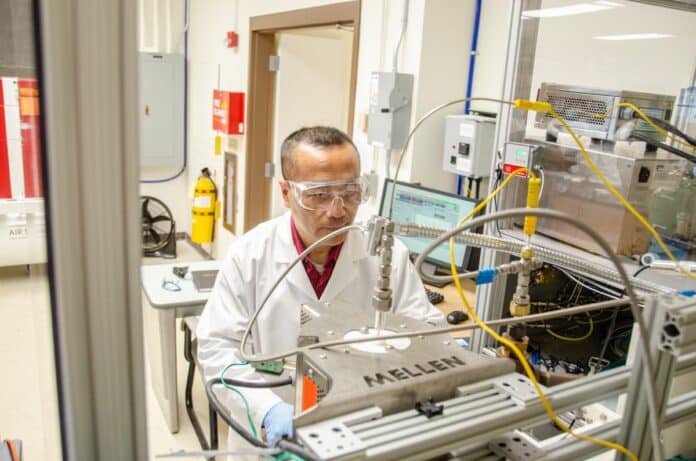West Virginia University engineers have secured $3 million in funding from the U.S. Department of Energy to research a new chemical reactor system that uses microwaves to reduce industrial heat and carbon emissions.
This technology would enable industrial facilities to produce ethylene and ammonia simultaneously within a single microwave reactor. Microwave electromagnetic radiation will be used to provide the heat needed to carry out the chemical reactions.
Ethylene and ammonia are important chemicals for various industries, but the traditional methods of producing these chemicals emit large amounts of greenhouse gases, which contribute to global warming and climate change.
The WVU team aims to explore how microwaves can be used to produce ethylene and ammonia simultaneously with lower energy and greenhouse gas emissions than conventional methods.
The team’s innovative reactor system uses electromagnetic microwave radiation to activate the chemical reactions instead of relying on fossil fuels or high temperatures and pressures.
Microwave technology is effective in providing precise control over the reaction conditions, resulting in higher yields and reduced energy consumption. This could enable a more sustainable and efficient way of producing these chemicals while reducing the environmental impact.
WVU’s research focuses on the reactor’s carbon-negative process, which can potentially reduce energy consumption by up to 85%. This innovation benefits various industries that consume high amounts of energy and could be adapted for simpler operations such as air separation.
According to researchers, as the microwave reactor has the ability to start up and shut down within minutes, it can be powered by intermittent sources of renewable energy. This is in contrast to traditional reactors, which require a steady and reliable energy source to function.
“Using microwaves allows us to control the heat delivery very precisely so that we can quickly switch between heating the reactor to produce methane and cooling it to synthesize ammonia,” said lead researcher John Hu. “By using the hydrogen from methane coupling, we remove the need for a hydrogen production step in ammonia synthesis and make the process much more friendly to the environment.”
The research builds on existing WVU patents and research demonstrating microwave reactors operating at lower temperatures and producing fewer byproducts than traditional methods. This approach enables the operation of the reactor in a non-equilibrium mode, which can increase efficiency and improve product yields.
To optimize operations, the team is also incorporating machine learning that processes real-time data measured by tools within the reactor.
He said the reactor design had been validated in the laboratory, and the goal is a successful demonstration within a real-world industrial environment by the end of the three-year study.
The potential commercialization of the reactor technology could lead to job creation, especially in regions like West Virginia with “stranded” natural gas resources that are currently not feasible for use. Hu’s team will consult with local communities, particularly those negatively affected by the coal economy, about how the development of low-carbon ethylene and ammonia industries could benefit them.
“Our research is part of a larger industrial transformation,” Hu said in a statement. “By next year, the U.S. will have 3.5 million jobs to fill in science, technology, engineering and mathematics fields. To spark interest in these lucrative fields even before college, we’ll host experiences for high school students and teachers in our labs and build activities around this research that will be the basis for WVU Engineering Challenge Camps, engaging local high school and middle school students.”
The development of microwave reactor technology by WVU engineers aims to promote sustainable industrial manufacturing. By reducing energy consumption and greenhouse gas emissions, leveraging renewable energy sources, and enhancing efficiency through technological advancements, this project is definitely in line with global initiatives to combat climate change.
